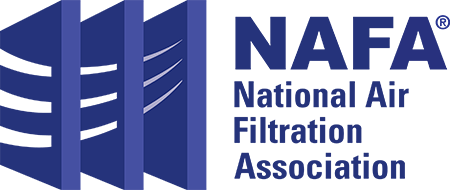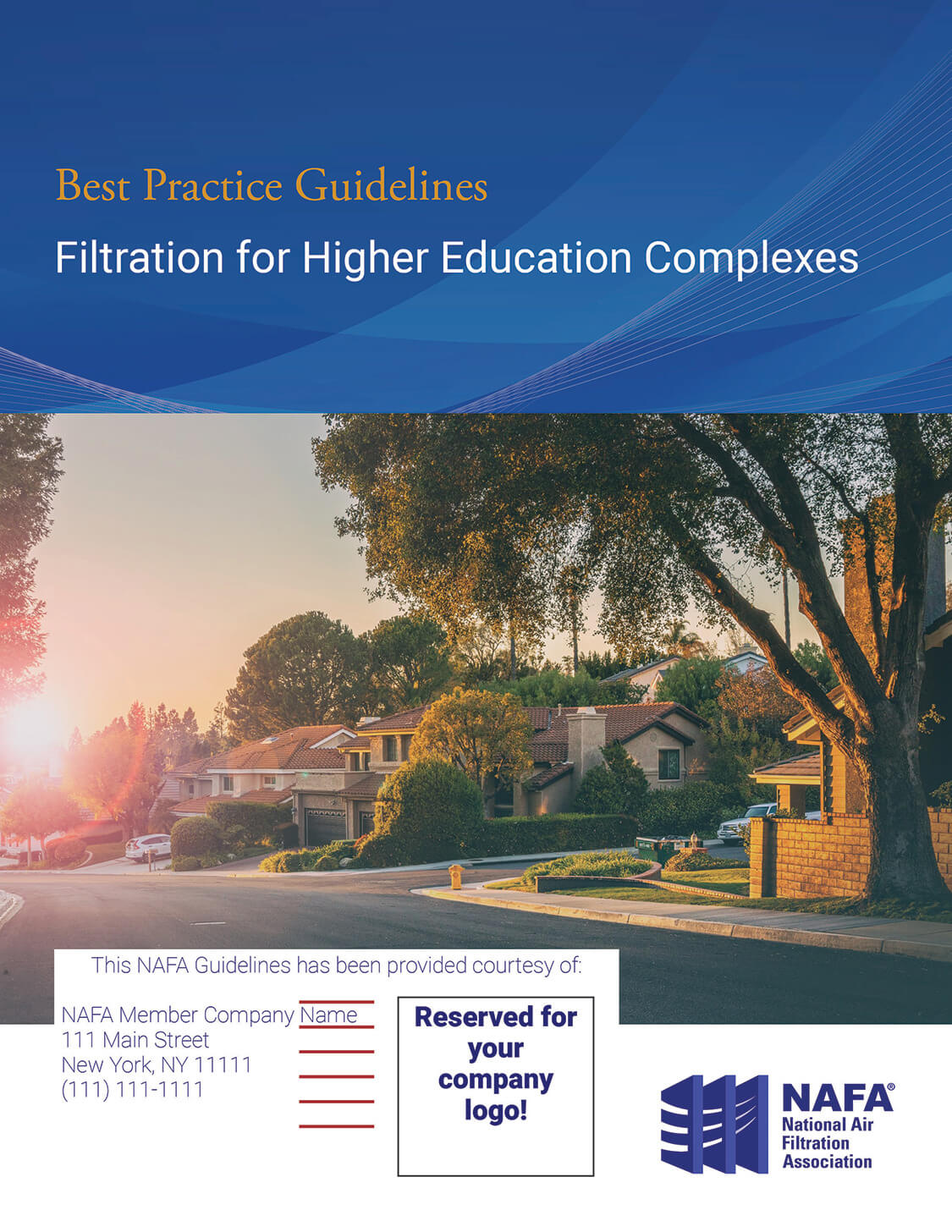Best Practice Guidelines
What’s the difference between ASHRAE Standard 52.2 and NAFA’s Best Practices and Guidelines?
The American Society of Heating, Refrigerating, and Air-Conditioning Engineers (ASHRAE) has minimum standards for air
filtration. Organizations like the National Air Filtration Association (NAFA) go beyond these minimum standards. NAFA publishes
best practices and guidelines for several facility applications based on the experience and expertise of their membership, as well as
current mandates and research provided by governmental and scientific communities. HVAC and air filtration professionals should
use NAFA’s Best Practices and Guidelines as a tool to educate their clients on how to protect their facilities’ occupants.
Branded Best Practice Guidelines (Members Only)
Add your organization’s logo to our 13 Best Practice Guidelines to distribute to your
employees and clients. This is a great way to show that your company is involved in the
industry and follows the latest best practices of air filtration. This purchase includes either
English language, or Spanish language guidelines, and any new guidelines produced but does not
include any updates to guidelines.

Filtration for Airborne Infections Containment Rooms in Health Care Facilities
Criteria for using air filtration in the removal of airborne infectious pathogens from hospital containment rooms for the purpose of protecting staff, patients, and visitors from nosocomial infections.
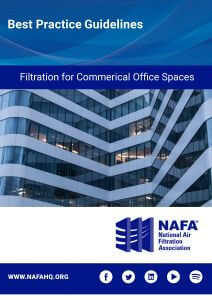
Filtration for Commercial Office Spaces
These best practice guidelines establish air filtration guidelines for the removal of particulate contamination for the protection of the air handling equipment and components, as well as providing comfort and a healthy environment for all who work, visit, live and play in these facilities. The recommendations in this guideline are considered by NAFA to be “best practice” in contrast to “minimum standards” as put forth by other organizations. These guidelines will provide owners and facility managers with the necessary information to make educated decisions when providing filtration products for their building, and serve as an essential component of their Indoor Air Quality (IAQ) and life safety program.
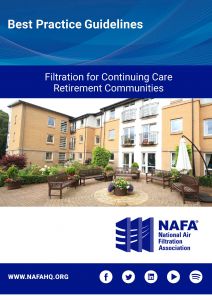
Filtration for Continuing Care Retirement Communities
Addresses the filtration practices associated with continuing care retirement communities, consisting of three main areas of care: independent living, assisted living, and skilled nursing.
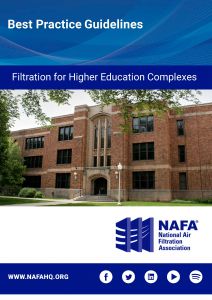
Filtration for Higher Education Complexes
Addresses the filtration practices associated with the complex systems and applications found in today’s higher education buildings. These guidelines take into consideration indoor environment and equipment protection. They also look at operating and maintenance of filtration systems, as well as conditions such as renovations, internal construction and localized exhaust. These guidelines include the many different building types found on a higher education campus, including, but not limited to, classrooms, science buildings, libraries, student living, offices, and sports complexes. Finally, this document addresses issues related to COVID-19, utilizing rapidly evolving knowledge provided by available research and government guidelines.
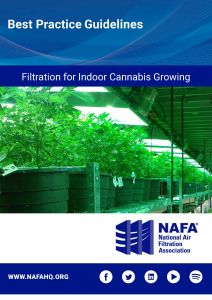
Filtration for Indoor Cannabis Growing
Provides air quality product guidance and recommendations specific to the indoor cannabis growing industry for the HVAC contractor, air filter company, and cannabis cultivation director. These guidelines are directed at fully enclosed cultivation facilities using HVAC systems. Greenhouse or outdoor growers will not be able to utilize all of the recommendations within.
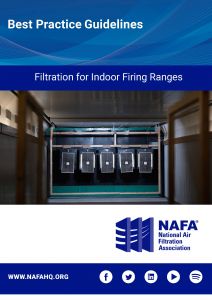
Filtration for Indoor Firing Ranges
Air filtration guidelines for the removal of airborne contaminants for the protection of employees and participants in indoor firing ranges.
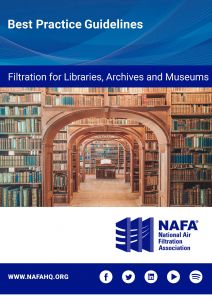
Filtration for Libraries, Archives and Museums
Criteria for the removal of particulate and gaseous contaminants for the protection and long-term preservation of historical documents and artifacts. The recommendations in these guidelines are considered by NAFA to be “best practice” in contrast to “minimum standards” put forth by other organizations. They serve to provide the conscientious facility manager with the necessary guidelines to make measurable differences of air quality in their building.
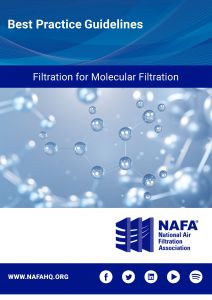
Filtration for Molecular Filtration
A general overview of how best to apply molecular filtration in HVAC applications where the need to remove gaseous airborne contaminants exists.
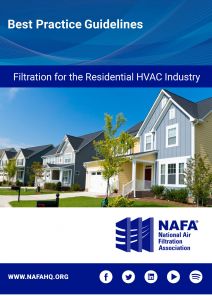
Filtration for the Residential HVAC Industry
Provides advice on achieving the cleanest air possible based on the design limits of existing HVAC equipment and with consideration of the impact on energy consumption and the environment.

Filtration for Schools
Criteria for the removal of particulate and molecular contaminants for the improvement of indoor air quality and protection of HVAC equipment in K-12 schools. These guidelines provide the facility managers with the necessary tools to make measurable differences to the operation of the HVAC systems on their campus through air filtration.
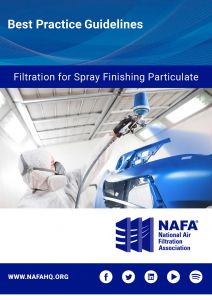
Filtration for Spray Finishing Particulate
Air filtration and spray collection guidelines for the removal of airborne contaminants for the protection of the employees, equipment, and environment in commercial and industrial spray booths.

Air Filtration Technicians on Site
Provides comprehensive guidance for the inspection, servicing, replacement, and retrofitting of filtration products and systems to the diverse HVAC equipment found in today’s built environment. This Best Practice has three components: pre site visit, on site visit and post site visit. All three are essential for exceeding customer’s expectations and performing the work in a safe, healthy, and environmentally friendly manner.
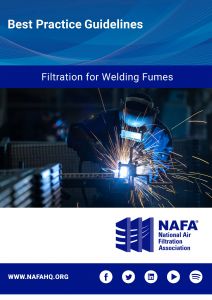
Filtration for Welding Fumes
Criteria for the removal of particulate and gaseous contaminants from the immediate breathing zone of employees engaged in the process of welding. Filtration guidelines for general ventilation, when applicable, are also addressed.
